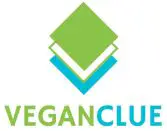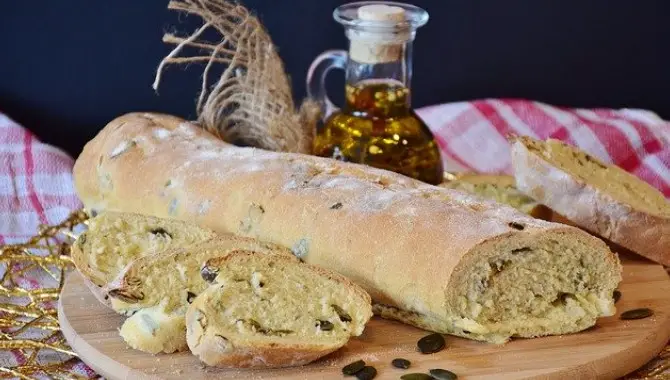Since going vegan, one of the most hard-hitting questions has been, “Is Ciabatta bread vegan?” At least half a dozen times, I have had people look at me while eating my Ciabatta and say, “Wait, you can eat that?” This is usually followed up by a variety of questions often by prospective or transitioned vegans. Even more surprising is the fact that they found I did enjoy the bread as much as any other person. But this was not the centre of attention. Revealing that I had ciabatta bread as a staple in my household would get fellow vegans intrigued even more.
But is Ciabatta bread vegan? Usually, but not always. In a perfect setup, all ciabatta bread would be vegan. This is not the case. But the good news is that most ciabatta bread I come across is vegans. And as I will explain later on, a lot of it lies in the ingredients present.
When I first started with my vegan diet, I would have ciabatta bread for as long as I can remember. Ciabatta toast for breakfast, making vegan sandwiches for lunch and rolls for dinner. A good number of times I would buy the bread from an eatery or exclusive vegan bakery.
But unfortunately, as one day would turn out, the ciabatta bread I was eating was not always a vegan product. A look at the ingredients on the label, and I knew I had to question whether the ciabatta bread was, in fact, vegan. This is to why the following section might be of interest.
Is all Ciabatta Bread Vegan?
As I did mention earlier, ciabatta bread is generally one of the purest forms of vegan bread around. That said, at its core, the bread is of four simple ingredients, which are all vegan. Only flour, salt, water, and yeast are necessary when making a ciabatta bread.
Yeast, in particular, is of much focus since vegans would argue its vegan characters. But yeast- the microscopic fungus responsible for the bread rise- is more like mould or mushroom.
It reproduces by budding, which is like the branches of a tree. Even its scientific name, Saccharomyces Cerevisiae translates to the sugar-eating fungus. This means yeast in bread is safe and okay for vegans to eat.
However, not all ciabatta bread around is vegan. Some bread types have extra ingredients to make them different from the traditional ciabatta loaves. In particular, the ciabatta al latte is a fresh bread enriched with other ingredients to help it stay soft and fluffy. In this case, this Ciabatta uses milk to change its texture and flavour- which means it’s not vegan.
Also, other ciabatta loaves that don’t meet vegan standards due to the ingredients. That is especially the case for the commercial ciabatta bread of today, present in most grocery store shelves.
Since there is an item of mass-production, most of these fresh ciabatta loaves of bread come full of sweeteners, fats, and other ingredients.
· Mono- and diglycerides: These are commercial ciabatta loaves, which may list ingredients such as the mono- and diglycerides. Both these ingredients are essential for water and oil to blend, but they are also sources from animals. Other additives such as enzymes can also be animal extracts, which also lowers the vegan standards of the Ciabatta.
· Lecithin: Lecithin is a generic term for a category of emulsifiers in use as smoothing food textures. While it is primarily from soybeans, this ingredient could also be from egg yolks. Its use in ciabatta bread making would make the loaf non-vegan.
· Whey: After research, I also found some bakers would also substitute water or milk and use whey instead of their Ciabatta. This is often to ballon up the dough and has a bigger ciabatta at the end. Unfortunately, whey is a by-product of milk and cheese processing. For this reason, it is crucial to check out and ensure if the ciabatta type has no whey in it.
· Dough conditioners: Dough conditioners are another group of popular bread ingredients that vegans often overlook. They comprise of many different ingredients or chemicals added to strengthen the dough texture in some way.
As such, a dough conditioner can be anything from an enzyme, mineral salt, oxidant, emulsifier or a yeast nutrient. PH regulators, vital wheat gluten(VWG), and redox agents also make up the list of many dough conditioner ingredients.
These are also ingredients that tend to add a lot of flavour and texture to the bread, but most are from animal products. Some of the ingredients include
- · Eggs
- · Butter
- · Cream
- · Casein
- · Honey
- · Sodium caseinate
Ciabatta Bread: An overview
In a vegan world, Ciabatta would be the bread of choice. Why? Most of it is vegan and practically available everywhere. From the fresh loaves at the bakery to the odd white bread at the food stores, Ciabatta would be a lovely staple for vegan households.
But this is not the case, and much of it is to blame on most vegans not knowing the bread’s origins.
The Ciabatta bread, as I know it, comes as a soft, humid bread with a flat and elongated shape. The white bread has its origins from Italy in the early 1980s and later on became a hot item for fast-food chains.
The name “ciabatta” is Italian for “carpet slipper” to the shape the bread takes after baking. Later on, in the 1990s, the bread fashion would cross the Atlantic and enter near-universal recognition. It was no longer an old-style European white bread but a loaf for all bread eaters.
But nowadays, the bread toppings are expanding immensely, and you can try out your ciabatta bread with other tasty foods. However, the traditional bread recipe is of the same values it was before.
In particular, the ciabatta bread has a reputation for its nutritional value. It is evident that it is a standard white bread, so there is little to assess in terms of nutritional value.
For starters, the ciabatta bread packs a total of 240 calories in each slice. This standard serving makes it suitable for a vegan looking for a caloric supplement. In addition to the caloric measure, the list of ingredients includes 70 % carbs, 18 % protein, and 12 %.
Judging from these, I can tell that it is challenging to contemplate the Ciabatta bread as a low-fat choice. This makes it an excellent choice as a supplement in the diet menu.
How to Tell If a Ciabatta Bread Is Vegan
Distinguishing whether a ciabatta bread is vegan is usually straightforward. On my part, I would have any bakery with my bread-on premise feature to tell me the ingredients of the ciabatta bread.
It’s pretty a standard for reputable bakeries to say precisely what’s going into the ciabatta bread they are making.
I also tend to distinguish vegan ciabatta bread at the grocery stores, thanks to the ingredient list. This is often the case whenever I come across an exclusive line of bread for vegans.
Checking the ingredients list in each package tells you a story of the ingredients only found in the vegan bread. It’s also the best way to ensure I avoid “vegan” bread with animal-derived ingredients or products.
However, it’s not always possible to tell a ciabatta bread is vegan by trusting the label. I found the best way to avoid this is by making my ciabatta bread once in a while.
Only through this would I ensure that the supply of ciabatta bread was fresh and made from vegan ingredients. And the best part is that the recipe is pretty simple, considering only a few ingredients are necessary.
At first, making a ciabatta bread will take time, it is not that difficult. As I found out, most of the time, I spent checking for the dough to rise and bake properly. In other situations, I would suggest using or setting a timer to ensure the ciabatta rolls come out with golden crusts.
An automatic bread maker also makes the work more manageable. I would only need to put the vegan ingredients, and all the work would be to wait.
Either way, the ciabatta bread recipe is pretty easy to master and gives you the satisfaction of fresh-baked bread that no store-bought bread could not offer.
I did try out the recipe I found from here to come up with my tasty ciabatta bread. So, get in the kitchen and try it out.
Bottomline
So, let’s summarize on the ciabatta bread.
It is a simple Italian white bread which is often vegan. But, you will come to need to look out for the non-vegan ingredients that bakers usually toss in. These common ingredients offenders unfortunately make up most of the unhealthy ordinary bread. So veganizing even your ciabatta bread still means a lot.
It gets to save you money, remain healthy and youthful-looking. At the same time, as a vegan, I also get to be aware of a vegan bread that I could make part of my healthy began breakfast. With this simple guide, you should be able to get a nice vegan bread to help you get to satisfy the urge to eat a vegan bread. Therefore, with depending on the ingredients available, you should be able to get a ciabatta bread that is vegan.
Welcome to VeganClue - My name is Robert Van De Ville and together with my team we spent hundreds of hours researching the most relevant topics for Vegans and non yet Vegans. Are you looking for more information about Veganism, animal welfare, diet, health, and environmental benefits of the Vegan lifestyle? You are in the right place! Enjoy the site.


